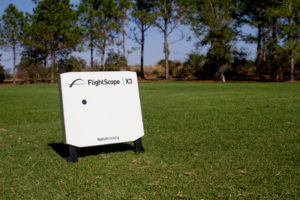In this article, we will be taking a look at unusual lies. Most golfers practice on flat surfaces whether it is at your local golf club’s driving range hitting off of grass or mats. Most of the shots you normally practice are from perfect lies. Think about your last round of golf you played. How many shots did you take off of a flat, perfect lie? Bet you don’t need more than one hand them count on. Most of this game is played off of uneven, far from perfect lies. There are basically four different types of uneven lies that you encounter in golf: uphill, downhill, and two side hill (ball above or below your feet) lies. Let’s look at the four in detail.

Take one of the side hill lies with the ball above your feet, the three frequent miss hits from this type of lie are chunking, pulling, and hooking the shot. The chunk is easy to understand because the ball is elevated and you are closer to the ball. The pull happens when the gravity takes over and pulls the golfer toward the lower point of the slope resulting in the club path changing course by a few degrees which results in a pulled shot. Hooking the shot from this position is produced when you take a lofted club and elevate it causing the loft of the club to spin the ball with right to left spin, resulting in a hook. A hook from this lie is also produced when you change your swing plane to a more horizontal plane promoting more hand and forearm rotation. There are several ways to control these types of miss hits from this type of lie.

First, stand as perpendicular to the ground as possible so that you represent as much as a normal lie as possible. Choke down on the club to help eliminate a fat shot. Make sure the ball is positioned in the middle of your stance since you will not be transferring your weight through the shot like you would in a normal swing. Avoid dipping or lifting your shoulders during the swing to help to hit the ball in the air. You will have better contact if you keep your shoulders level and balanced throughout the swing. Allow for a pull or hook by aiming to the right of the target. Keep in mind that the steeper the slope, the more you will have to compensate. Finally, take more club and swing with less effort.
One of the hardest shots in golf is when the ball lies below your feet. Think back to when you first started the game and your golf instructor had you hit shots from off of a tee. It is easier to hit shots when the ball is teed up. Then it got more difficult when the golf instructor had you hit the ball off the ground. Well the same concept holds true when you have the ball below normal ground level and the ball is below your feet; it’s more difficult the lower the ball gets.
From this type of lie the ball has a tendency to do just the opposite from when the ball was above your feet, which is to top, push or push-slice the ball. To help compensate for this type of lie, first, stand close enough to the ball so that it is easier to reach. Gripping the club at the end of the grip will also help in reaching the ball. Try to setup with your body perpendicular with the lie and bend at the knees more to move your weight towards your heels. Again, do not change the level of your shoulders throughout the swing. Allow for a push or slice to the right by aiming left of your intended target pending on the steepness of the slope.
For uphill lies, the tendency is to either chunk the shot or hit the ball higher than normal and shorter in distance. Gravity has a tendency to pull your weight to your back foot, keeping you from transferring your weight forward to your lead foot. Which causes you to swing the club left of your normal swing path. The uphill lie also causes your stance to tilt upward which also adds loft to the club resulting in a high launch angle. To help combat miss hits from this type of lie, setup with your shoulders parallel to the slope. Keep the ball positioned in the middle of your stance and take more club than normal, due to the fact that the uphill stance will add loft to the club. Choke down on the grip. Aim to the right because you will have a tendency to pull this shot pending on the steepness of the slope.
Downhill lies are just as difficult as side hill lies when the ball is below your feet. This lie will typically produce topped, pushed or push-fade shots. The push and push-fade shots result from not getting the club head square to the target early enough in the swing. To help hit more consistent shots from these types of lies, setup with the ball back of the middle of the stance and your shoulders parallel to the slope of the ground. This type of lie will cause the club head to deloft through impact resulting in a lower and hotter ball flight that will normally roll out, so adjust for this in club selection and swing with less effort. Aim to the left to allow for a slight push or fade from this type of lie.
Hopefully with these few tips and adjustments, you will escape from these lies with ease. Make sure to practice each lie with different severity slopes to help you get a better concept of how the ball will react off certain lies. Photographs #1 and 2 illustrate a side hill lie with the ball below my feet. In photograph #1, you can see where I lined up straight at the target and what type of ball flight is produced from this type of lie. In photograph #2, you can see the adjustments in alignment to compensate for the ball flight produced from this type of lie. Photographs #3 and 4 illustrate a side hill lie with the ball above my feet. Photograph #3 illustrates the type of ball flight produced from this type of lie and how I lined up straight at the target. Photograph #4 shows the adjustments made to help compensate for the hook ball flight that this type of lie produces. Practice each situation numerous times before taking to the course. Experiment from different lies and angles to get a better feel for how the ball will react in those situations. Hopefully with the right practice you will be able to lower your scores, overcome any lie and enjoy the game even more.



